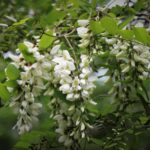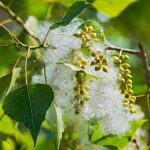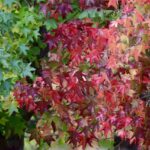How to Grow a Black Locust Blossom from Seed
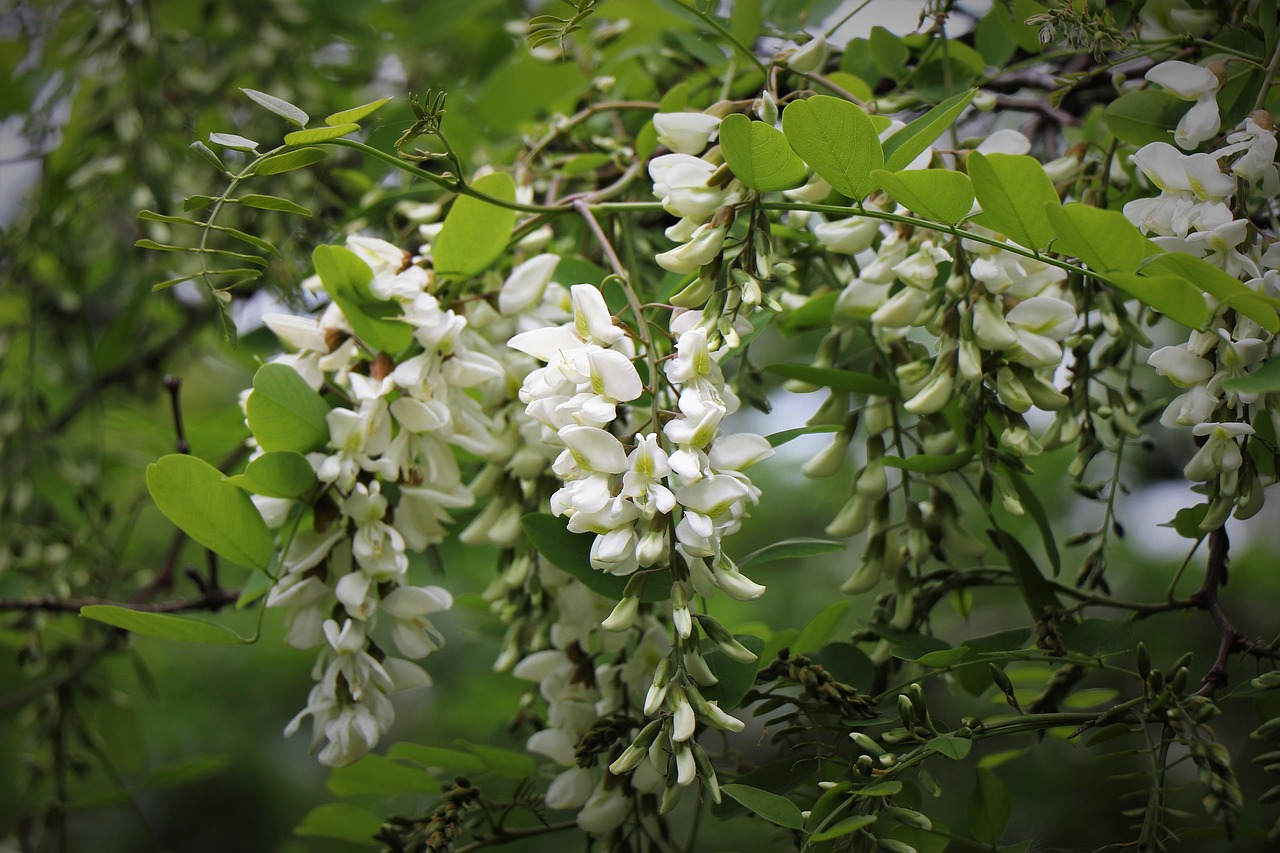
When I first looked into growing black locust, I was honestly amazed at how much one tree can impact the whole area around it. The black locust blossom (from Robinia pseudoacacia) isn’t just showy and sweet-smelling; it’s right at the center of the tree’s role in the ecosystem.
Understanding The Black Locust Blossom And Its Botanical Role
The blossoms appear in thick, drooping clusters sometime in mid to late spring, filling the air with a powerful, honey-like scent. It’s easy to notice a black locust tree at this time of year thanks to those clouds of white flowers swaying in the breeze. If you’re a bee, butterfly, or pretty much anything with wings, that’s a major buffet. In fact, they’re a big draw for pollinators, which helps create strong hives and even tastier honey. It’s not an exaggeration to say these blooms help fuel a good chunk of the local insect life each spring.
A few things about their botanical role stand out:
- The flowers are edible and used in all kinds of homemade treats, from cordials to fritters.
- Only the blossoms are safe to eat. The leaves, bark, and especially the seeds can be toxic to humans and pets.
- Black locust is a nitrogen fixer, so those roots actually improve the soil, which makes it easier for some plants to grow nearby—but that same ability can sometimes give invasive plants a boost, too.
- Once the flowers fade, the tree forms flat, pea-like pods packed with seeds that can stick around in the soil for up to a decade, just waiting to sprout.
- Besides seeds, the black locust spreads itself by sending up new shoots from its roots, so it tends to form dense thickets over time.
| Characteristic | Description |
| Flowering Time | Mid to late spring |
| Flower Color | White (sometimes pinkish tinge) |
| Pollinators Attracted | Bees, butterflies, hummingbirds |
| Nitrogen Fixing | Yes |
| Seed Pod Appearance | Flat, brown, pea-like |
| Edible Parts | Flowers only |
| Growth Habit | Fast, forms colonies |
I find that the black locust’s quick growth and flashy flowers make it hard to ignore. It brings instant drama each spring but has a habit of taking over if left unchecked. Whether that’s good or bad for your space depends a lot on what you want from your landscape.
Seed Sources & When Blossoms Produce Black Locust Blossom Pods Produce
When it comes to finding seeds for black locust tree blossoms, it’s not as straightforward as picking up a packet at the garden center. The most reliable source is straight from the trees themselves, especially if you have access to local groves or know someone with mature black locusts. You’ll want to look out for those clusters of pea-like pods that hang where the white blossoms once were—as these hold your seeds.
Here’s what I’ve learned about timing and sources for gathering those seeds:
- Black locust trees bloom most years in late spring to early summer, often around late May through June, depending on the region. Once those blooms fade, seed pods develop quickly over the following months.
- The pods, which look like skinny brown beans, mature and dry out by late summer or early fall. That’s when they’re easiest to harvest.
- If you’re not sure where to start, check roadsides, riverbanks, or the edges of prairies, as these are favorite spots for black locust tree blossoms to thrive.
If you need more structure, this table might help line up the main points about seed collection:
| Time of Year | What to Look For | Notes |
| Late Spring | White blossoms | Attractive to pollinators, not pods |
| Early Summer | Fading blossoms | Pods start forming |
| Late Summer/Fall | Brown, dry pods | Best time to collect seeds |
In my experience, watching the shift from blossom to pod is a quick reminder: if you want viable seeds, you need to act in that window right after the pods have fully browned but before they split open on their own.
Harvesting Seeds From Black Locust Blossom Pods
When it comes to getting seeds from black locust blossom pods, I always pay close attention to the timing. The seed pods, which look a lot like small, brownish beans, usually mature toward late summer or early fall. I wait until the pods turn dry and shift from a green color to a tan or brown shade. If you try before they’re totally dry, the seeds can be soft or not fully ready—just not what you want for successful sprouting later on.
Once those pods are crisp and start to rattle when you shake them, that’s the perfect sign they’re ready to pick. Here’s what I do:
- Pick pods directly from the tree rather than ones that have already dropped to the ground. Ground pods are often damaged or moldy.
- Collect more pods than you think you’ll need, since not every seed will actually sprout (as seen with similar trees like the Norway maple).
- Place the pods in a paper bag or open container. I avoid using airtight bags right away, since the pods can still hold some moisture, which may cause mold.
After I get them home, I let them sit for a few days in a cool, dry spot. This helps any leftover green pods to finish drying out, making it so much easier to split them open and get the seeds out. Splitting open the pods is simple: just use your fingers or a small knife, and you’ll find several small, hard, round seeds inside each one.
Seed Collection Checklist:
- Watch for pods turning brown and dry before picking.
- Gather from upper branches if possible—lower pods sometimes have more insect damage.
- Keep collected pods in a cool, dry spot while you work through them.
Patience pays off here. If I rush and pick the pods too early, most seeds won’t germinate well. Giving them a bit of extra time on the tree makes a big difference in sprouting later.
Preparing Seeds for Germination
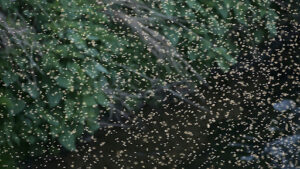
When it comes to black locust seeds, they have a tough outer coating that makes it pretty hard for water to get through. Scarification and soaking are the two steps I never skip to help break that barrier and jumpstart the germination process. Basically, if you try to plant unscarified seeds, you’re just going to waste time waiting for something that’s not going to happen.
Here’s how I usually go about it:
- Grab some fine sandpaper and gently rub each seed until a tiny white spot appears. That’s the signal that the coat has been worn down enough.
- Place the scratched seeds in a cup or small bowl. Pour hot, not boiling, water over them. You want it just off the boil—if it’s too hot, it could cook the seeds!
- Let them soak for 24 hours. If they’ve swelled noticeably after soaking, that’s a good sign—they’re ready to plant.
Alternatively, if the sandpaper method feels tedious, soaking alone sometimes works, but it takes longer and is less reliable.
| Step | Material | Duration/Note |
| Rub on sandpaper | Sandpaper | Until white spot |
| Hot water soak | Hot water | 24 hours |
| Check for swelling | Visual check | After soaking |
Rushing this step hardly ever pays off. Seeds that don’t get scarified rarely sprout, so patience right now saves a lot of disappointment later on.
If you’re curious, some other types of trees, like London plane trees, also benefit from soaking or other treatments to help seeds germinate. It’s honestly a simple process, but skipping a step can mean zero results. Once the black locust seeds have taken up water and the outer layer is breached, they’re way more likely to grow strong and fast.
Germination & Early Growth Of Black Locust Blossom Seedlings
Getting black locust seeds started takes a bit of patience, but the process is pretty straightforward. Once I’ve scarified and soaked my seeds, I plant them about a quarter inch deep in a tray or pot filled with moist potting soil. I keep the soil lightly damp, never soggy, and make sure the container is somewhere warm and gets some indirect sunlight.
Here’s a quick checklist I always follow for sprouting black locust seeds:
- Fill a well-draining container with moist potting mix
- Plant scarified, soaked seeds 1/4″ deep
- Place the container in a warm spot, out of direct harsh sunlight
- Keep the soil evenly damp – a spray bottle works well
- Wait for germination, which usually takes about a week if scarification was successful
After the seeds sprout, the tiny seedlings will quickly grow their first leaves. I have to be careful at this stage; the tender shoots don’t like being disturbed. I let them grow until they have a couple of sets of true leaves before worrying about moving them.
| Stage | Approx. Time | What to Watch For |
| Germination | 1 to 2 weeks | Emergence of green shoots |
| Seedling (1st leaves) | 2 to 3 weeks | True leaves appearing |
| Early growth (transplant-ready) | 4 to 6 weeks | 2-4 true leaves, sturdy stem |
Some of my seedlings stretch tall if they don’t get enough light, so I check them daily and move them to a sunnier windowsill if they’re looking pale or leggy. It’s surprising how fast they take off once established, but I’ve learned it’s safest to handle their roots as little as possible in these first weeks.
Transplanting Seedlings & Nurturing Black Locust Blossom Growth
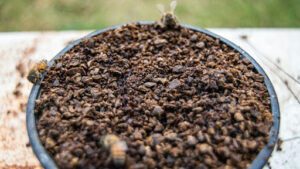
When my black locust seedlings have developed a few sets of true leaves, I know they’re ready to move out of their starter pots and into their permanent home. Timing is everything—transplanting while the seedlings are sturdy but not rootbound gives them a strong start.
Here’s how I approach transplanting and early care:
- I chose a planting site with well-draining soil since black locust really doesn’t like standing water. If all I’ve got is heavy clay, I work in some sand or compost to lighten it up.
- I carefully dig up each seedling, holding it by the leaves, not the stem, to avoid crushing the tender growth.
- Each hole I make is a bit wider than the root ball and just as deep. I try not to plant too deep—keeping the root collar at ground level seems to help prevent rot.
Once the seedlings are in place, here’s what I keep in mind:
- Water them right after transplanting. For the first couple of weeks, I check the soil moisture every day.
- I don’t use fertilizer. Black locust is tough and can make its own nitrogen, so I skip the plant food.
- If deer or rabbits are a problem in my area, I use a simple wire cage or mesh to keep them from chewing on the young trees.
- Mulching with a thin layer of straw helps hold moisture, but I don’t pile mulch up against the trunks.
| Task | Frequency | Notes |
| Water seedlings | 1-2x per week (first month) | More if days are hot/dry |
| Check for pests | Weekly | Remove borers by hand if visible |
| Mulch adjustment | As needed | Maintain 2 inches away from the stem |
After transplanting, young black locust trees seem to take a few weeks to settle in. I’ve noticed they often put on more leaf growth once their roots spread out and get comfortable.
Patience definitely pays off here—growth might be slow above ground at first, but underground, the roots are getting ready for a burst of new leaves and (in time) those fragrant blossoms.
Encouraging Flowering: From Seedling To Black Locust Blossom Stage

Getting a black locust tree to bloom can be a waiting game, but there are a few things I keep in mind to help speed things along. Flowering is linked to age, sunlight, and overall health more than anything else. Most black locust seedlings take about 3 to 8 years before they start showing off their blossoms, so patience is a big part of this process.
Here’s what I usually focus on to nudge these trees in the right direction:
- Make sure the tree gets plenty of direct sunlight — at least 6 hours a day. Young trees in too much shade often won’t bloom at all.
- Limit fertilizer, especially nitrogen-heavy blends. Too much nitrogen means a leafy, green tree but fewer flowers overall.
- Avoid heavy pruning of young trees. It’s tempting to shape them early, but cutting back the main branches can delay flowering by a few years.
| Years from Seed | Likelihood of First Blossoms |
| 1-2 | Very low |
| 3-5 | Moderate (if ideal care) |
| 6-8 | High (tree usually mature) |
If you’re seeing plenty of healthy growth but no flowers, it’s usually just a matter of time — black locust trees are naturally slow to start blossoming but will reward your patience with huge, fragrant clusters in late spring.
The process reminds me of how other trees, like the tulip tree, thrive in full sun and rich soil, and I think about whether my black locust’s spot gets enough light. Sometimes, the simplest details make all the difference in when and how these trees bloom. Mulching around the base and keeping the tree hydrated during dry spells helps a lot, too. All in all, you just have to let the black locust grow at its own pace and look forward to that first year; it really fills out with those white, pea-shaped flowers.
Maintenance, Protection & Troubleshooting For Black Locust Blossom Trees
I’ve spent a few years raising black locust blossoms from seed, and—after finally getting a sapling or two into the ground—you might think you’re out of the woods. That’s not quite the case, though. The real work starts with keeping them healthy as they grow. Black locust trees are pretty tough, but they do need a bit of attention to keep them looking good and staying strong. Here’s how I handle day-to-day care, protect them from problems, and deal with issues as they pop up:
- Pruning: I prefer pruning in late winter or summer. Removing dead or damaged wood is important, but I skip pruning in spring to avoid excess sap and insect attraction. Watch for those thorns!
- Watering: While they don’t need much once they’ve settled in, young trees need consistent watering—especially if it hasn’t rained much. I learned the hard way that soggy soil is a no-go. Well-drained spots keep them happy.
- Sunlight: I always plant mine in a spot with at least six hours of full sun. They just don’t thrive in shade; even a little bit of crowding from taller trees can spell trouble for a black locust.
- Pest and disease monitoring: Locust borers and leaf miners are a pain, but rarely kill mature trees. Still, I keep a lookout for brown leaves before late summer, and sometimes pick off badly affected branches. A weak or decaying tree, however, can become a serious hazard—especially in storms.
- General protection: Deer and rabbits think young seedlings are tasty. I use a small fence or mesh until the main trunk gets woody and less appealing.
Here’s a simple reference I keep taped up in my garden shed:
| Task | Frequency | Notes |
| Watering | Weekly (young) | Less often, once established |
| Pruning | Late winter/summer | Avoid spring; wear gloves! |
| Pest Inspection | Monthly | Look for borers, leaf miners |
| Sunlight Check | Once per season | Move seedlings if needed |
| Sucker Removal | As needed | Prevent unwanted spread |
Whenever I’m unsure, I remember that black locust is adaptable—just not to being ignored entirely. Consistent, simple care goes a long way. If something does go wrong, it’s usually caught early.
If you’re curious about how black locust stands compare to similar hardy trees, you might find some notes about tree care in different climates, like for Black Hills spruce trees, helpful for thinking about your planting site as well.
Keeping your black locust blossom trees healthy is easy when you know the basics. Always watch for signs of pests or broken branches, and water your tree when the soil is dry. If you need help or have questions, don’t hesitate to reach out for expert advice. Visit our website today for more tips and to get a free quote from tree care professionals!
Frequently Asked Questions
How do I know if my black locust seeds are ready to plant?
After soaking the seeds in hot water for 24 hours, they should look bigger and swollen. If they don’t change in size, soak them again. Seeds that absorb water are ready to plant.
What is the best time of year to collect black locust seeds?
The best time to collect black locust seeds is in the fall, after the seed pods have turned brown and started to split open. This is when the seeds are mature and easiest to gather.
How deep should I plant black locust seeds?
I plant black locust seeds about 1/4 inch deep in moist potting soil. This depth helps the seeds stay moist and warm, which helps them sprout faster.
How can I protect young black locust seedlings from animals?
I use wire cages or fencing to keep deer and rabbits away from my young seedlings. This stops animals from eating the tender leaves and stems.
How long does it take for a black locust tree grown from seed to flower?
A black locust tree can start to flower as early as 6 years after planting from seed, but sometimes it may take a bit longer, depending on growing conditions.
What are the main pests or problems for black locust trees?
Black locust trees can be bothered by borers and leaf miners, which might damage leaves and branches. Usually, the tree will recover on its own, but I always check for signs of disease or damage and prune when needed.

